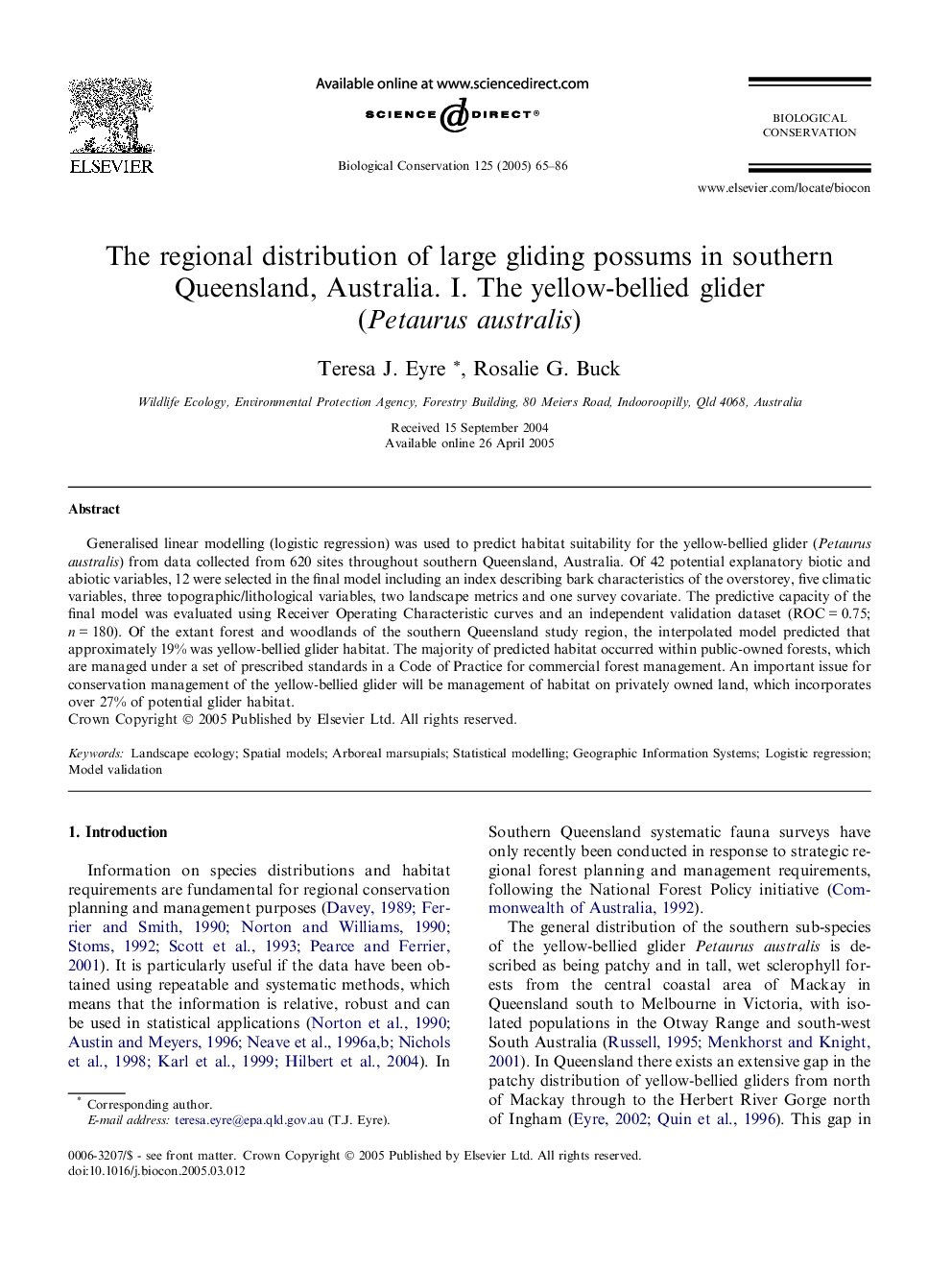| Article ID | Journal | Published Year | Pages | File Type |
|---|---|---|---|---|
| 9446147 | Biological Conservation | 2005 | 22 Pages |
Abstract
Generalised linear modelling (logistic regression) was used to predict habitat suitability for the yellow-bellied glider (Petaurus australis) from data collected from 620 sites throughout southern Queensland, Australia. Of 42 potential explanatory biotic and abiotic variables, 12 were selected in the final model including an index describing bark characteristics of the overstorey, five climatic variables, three topographic/lithological variables, two landscape metrics and one survey covariate. The predictive capacity of the final model was evaluated using Receiver Operating Characteristic curves and an independent validation dataset (ROC = 0.75; n = 180). Of the extant forest and woodlands of the southern Queensland study region, the interpolated model predicted that approximately 19% was yellow-bellied glider habitat. The majority of predicted habitat occurred within public-owned forests, which are managed under a set of prescribed standards in a Code of Practice for commercial forest management. An important issue for conservation management of the yellow-bellied glider will be management of habitat on privately owned land, which incorporates over 27% of potential glider habitat.
Keywords
Related Topics
Life Sciences
Agricultural and Biological Sciences
Ecology, Evolution, Behavior and Systematics
Authors
Teresa J. Eyre, Rosalie G. Buck,
